- Joined
- May 3, 2001
- Messages
- 7,516
I am finally back from the AGS cut grading seminar, wow! My head feels like an overstuffed grape and I think knowledge is leaking out of my ears...
It was an intense session with a lot of great instruction and some one on one time with both Pete Yantzer and Jim Caudill. I actually learned how to use the Diamcalc software, of which both Pete and Jim are huge fans, even though they are developing and will soon announce their own software strictly for AGS jewelers to use in assigning cut grades.
AGS had fully developed the metrics for their dispersion grading as well as for the light proformance. This was NOT easy and required the use of FORWARD ray tracing, not backward ray tracing as while forward and back work for brilliance, backward ray tracing does NOT work for dispersion.
I will share an example of the metric here. This particular slide is taken, with permission and attribution from the AGS presentation given. It is a 6mm round with a pavilion angle of 40.4, a table of 55%, a crown angle of 33.0, a star facet length of 50% and lower girdle length of 80%. For those who have trouble figuring it out, the chart on the side shows the starting length of the flash at the eye from a set distance, the longer the length the more visible the dispersion, so the light yellow color at the top is the most desirable amount of dispersion.
We will use this information in future posts, that show what looks to be art but in fact is incredibly useful as well as very beautiful.
Wink
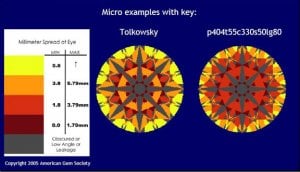
It was an intense session with a lot of great instruction and some one on one time with both Pete Yantzer and Jim Caudill. I actually learned how to use the Diamcalc software, of which both Pete and Jim are huge fans, even though they are developing and will soon announce their own software strictly for AGS jewelers to use in assigning cut grades.
AGS had fully developed the metrics for their dispersion grading as well as for the light proformance. This was NOT easy and required the use of FORWARD ray tracing, not backward ray tracing as while forward and back work for brilliance, backward ray tracing does NOT work for dispersion.
I will share an example of the metric here. This particular slide is taken, with permission and attribution from the AGS presentation given. It is a 6mm round with a pavilion angle of 40.4, a table of 55%, a crown angle of 33.0, a star facet length of 50% and lower girdle length of 80%. For those who have trouble figuring it out, the chart on the side shows the starting length of the flash at the eye from a set distance, the longer the length the more visible the dispersion, so the light yellow color at the top is the most desirable amount of dispersion.
We will use this information in future posts, that show what looks to be art but in fact is incredibly useful as well as very beautiful.
Wink


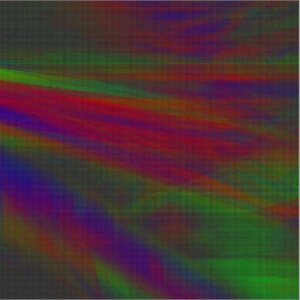
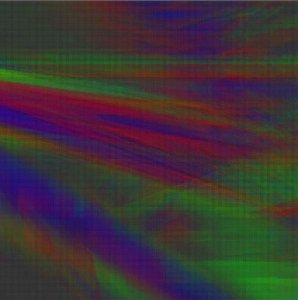
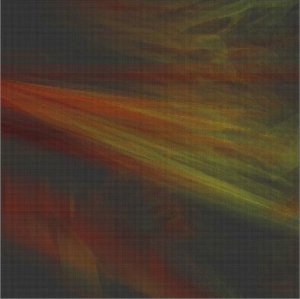

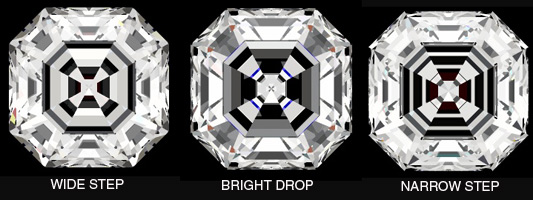




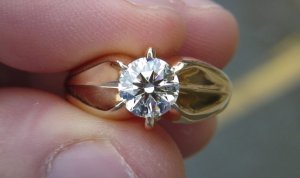


300x240.png)